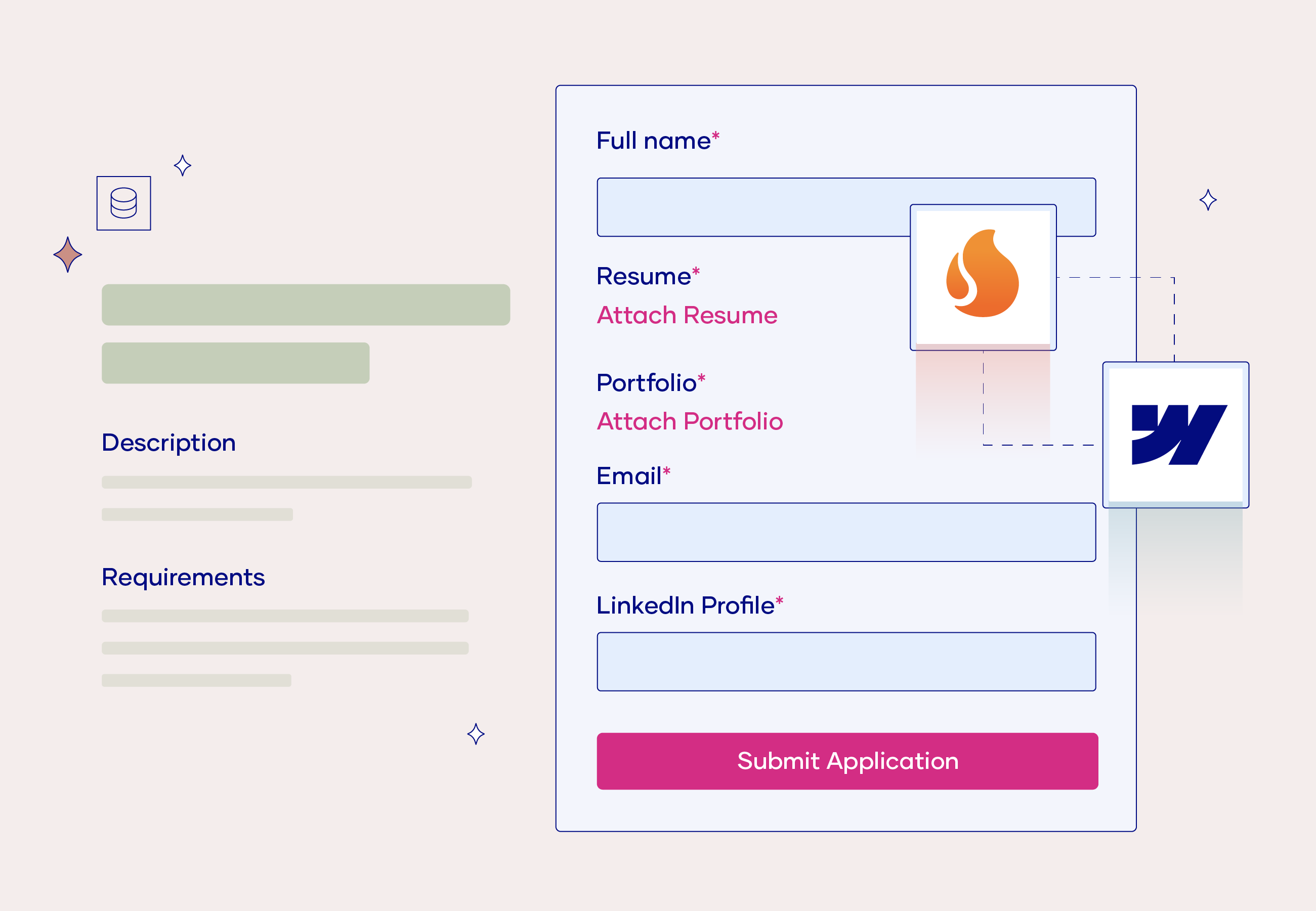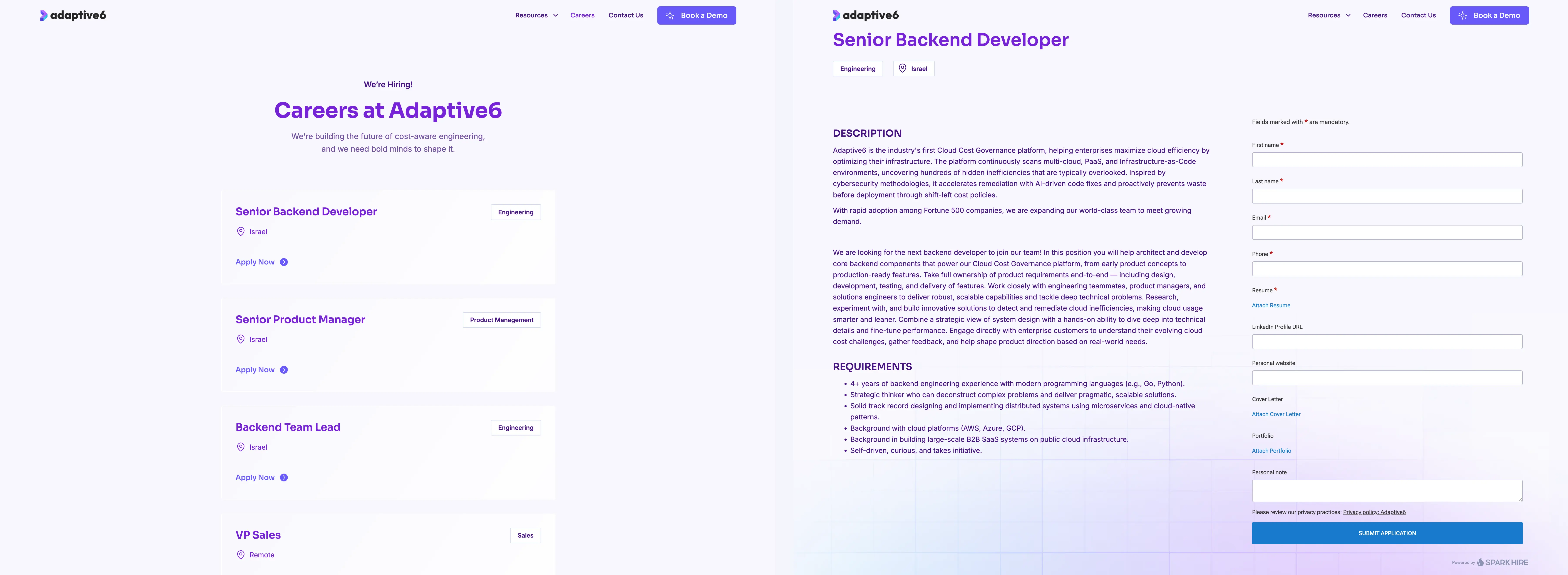
For years, teams that used Comeet for recruiting faced a simple but frustrating problem. You could either use Comeet’s embed code and get a functional but visually limited job board, or you could build a beautiful custom Careers page in Webflow and manually manage job posts inside Webflow’s CMS. One option looked bad, the other required constant maintenance. Neither was ideal, especially for marketing teams that care about brand consistency and for HR teams that want simple workflows.
Today, Spark Hire (formerly Comeet) solves this problem with a powerful new Webflow integration. It brings together the convenience of posting roles directly inside Spark Hire with the design freedom of Webflow. The result is a career page that always stays in sync and always looks on brand.
Option one: Comeet embed code.
The classic Comeet embed dropped a script on your site to auto generate your list of open roles. It worked, but the styling options were limited. Matching typography, layout, interactions, and responsive rules was difficult without custom code. Many companies ended up with a Careers page that looked disconnected from the rest of the website.
Option two: Webflow CMS created manually.
To get a fully custom design, marketing teams and Webflow developers often created their own CMS structure inside Webflow and copied jobs manually. The design looked perfect, but the content was not synced. HR would update a job in Comeet, but the Webflow version did not update until someone remembered to copy it over. It led to stale listings, duplicated work, and confusion.
Both paths required a compromise. You either sacrificed the design or sacrificed the workflow.
The new Spark Hire integration finally bridges this gap. Instead of embedding a script, Spark Hire now syncs your open positions directly into a CMS Collection within your Webflow project.
Here is how it works in practice:
Their team sets up a CMS Collection inside your Webflow site. This includes fields for job name, department, location, employment type, UID, and more. These fields match the data structure inside Spark Hire, which means they sync directly.
Recruiters and HR teams continue to publish positions from the Spark Hire interface. Nothing changes in their workflow. No need to log in to Webflow or edit the site.
Every published job automatically populates Webflow’s CMS. Each item in the collection becomes a unique job posting page with its own URL.
This is where the magic happens. Because the data now lives inside Webflow’s CMS, we can design a completely custom career page.
We can:
In simple terms, marketing finally gets the beautiful career page they want, while HR keeps the simple workflow they need.
Once everything is designed, all you ever need to do is click Publish in Webflow. Spark Hire updates the CMS, and Webflow publishes it. No more manual copy and paste.


This integration gives companies the best of both worlds. Your Careers page stays up to date automatically, and you keep full creative control of its design. No compromises, no hacks, no mismatched styling.
For startups and growing teams, this also saves hours of admin work every month. HR posts the job once. The site updates itself. The career page matches your brand. Everything works.
For agencies like Polar, it also means we can finally build custom, scalable, and fully synced career experiences for our clients without relying on clunky embed widgets.
The Spark Hire and Webflow integration is a significant upgrade for any team that cares about both workflow and design. It turns Webflow into a true recruiting front end. HR stays in Spark Hire. Marketing stays in Webflow. Everything stays synced.
If you need help setting up a custom career page using this new integration, or want to transform your recruiting presence into a branded experience, our team is happy to help.
The Spark Hire Webflow integration automatically syncs open job positions from Spark Hire into Webflow’s CMS, allowing teams to design fully custom career pages without manual updates.
Comeet’s old embed required inserting a script that generated generic job listings, which did not match a site’s branding. The new integration stores job data directly in Webflow CMS, allowing complete design freedom.
No. HR teams continue posting roles inside Spark Hire. Webflow fetches the new openings automatically, and all that is needed is a regular site publish.
Yes. Since Spark Hire pushes data into Webflow CMS, designers can style job lists and job pages using native Webflow tools, interactions, and components with no code.
Spark Hire’s support team creates the CMS Collection in Webflow. From there, your Webflow developers build the custom career page and connect the design to the synced data.
